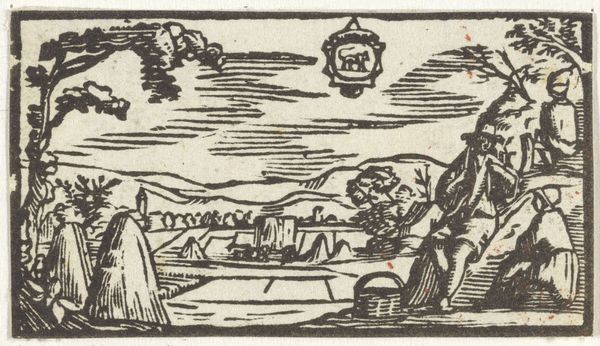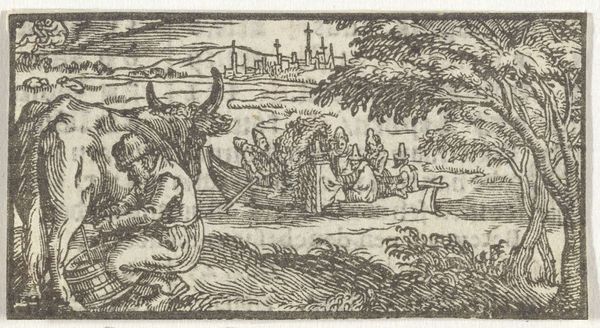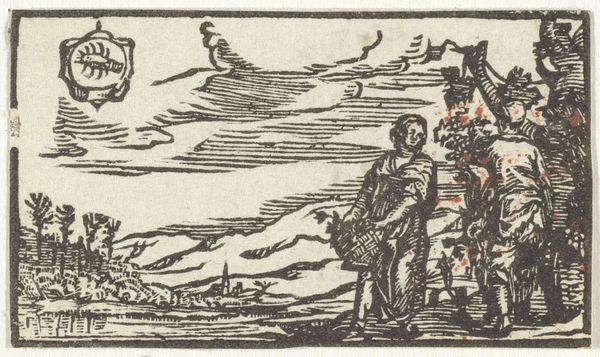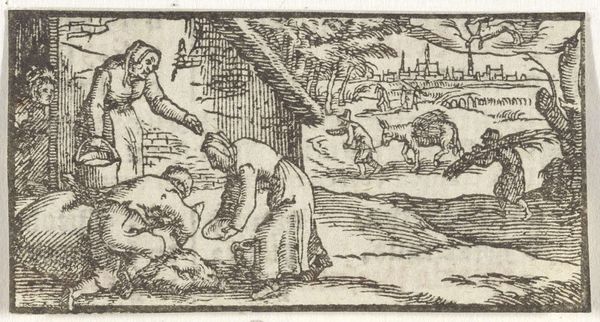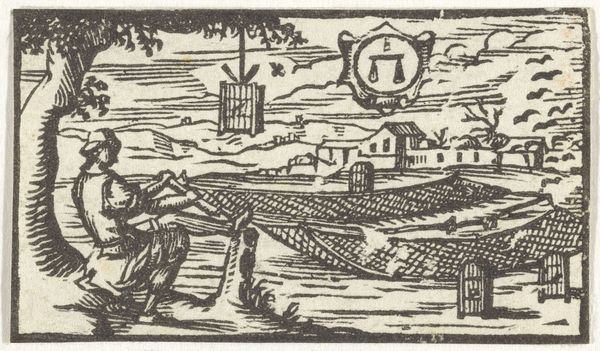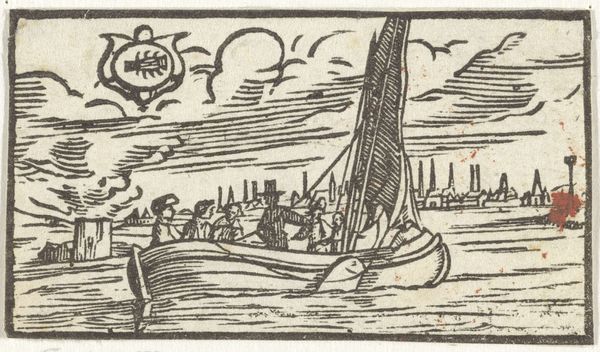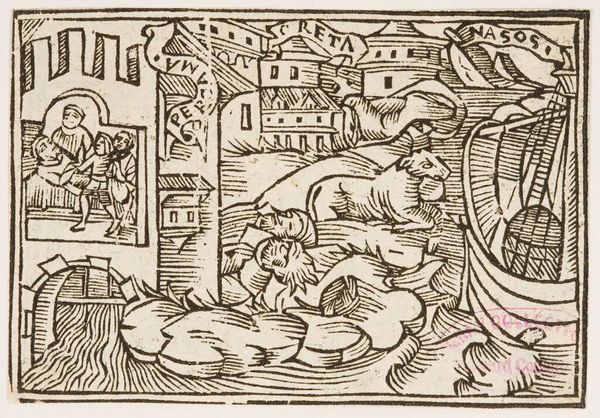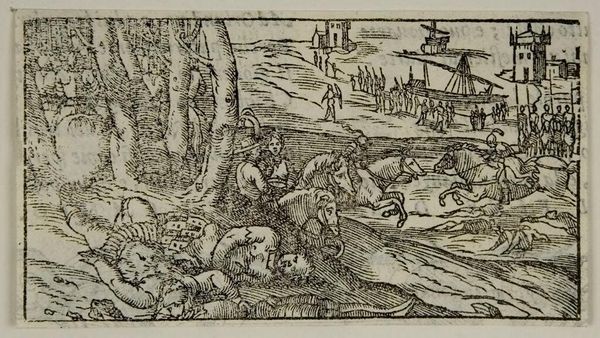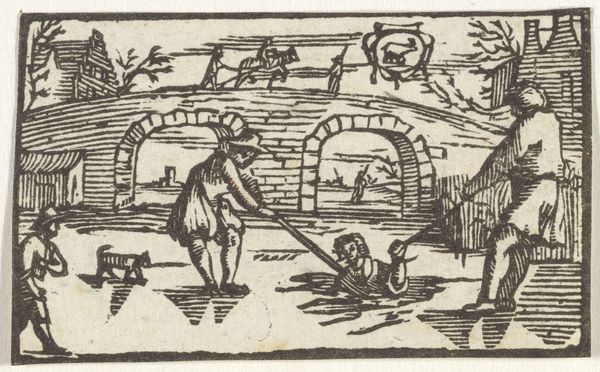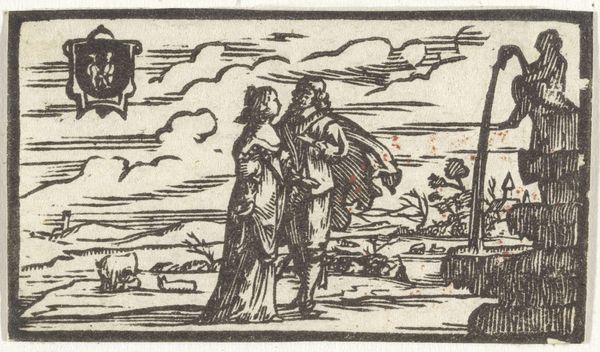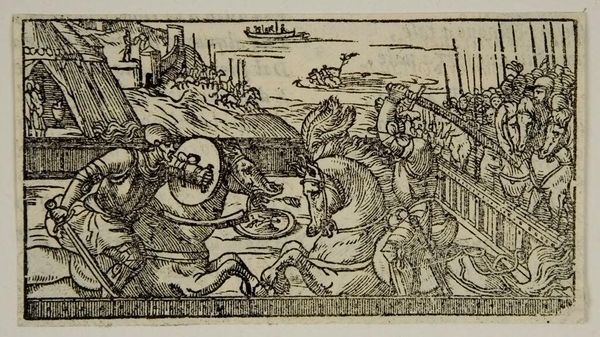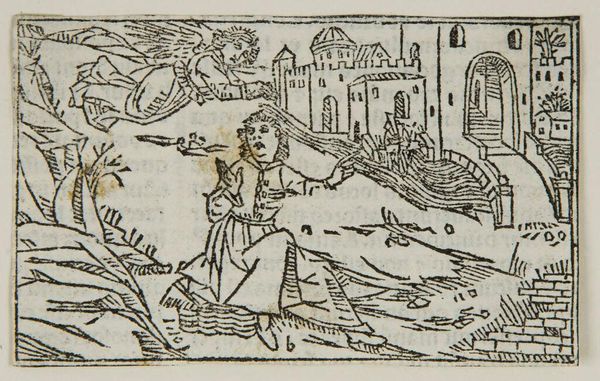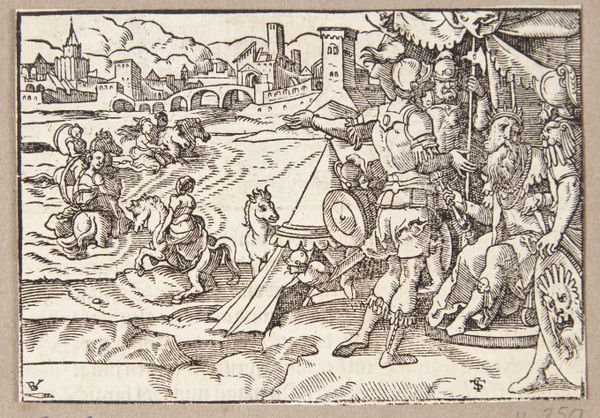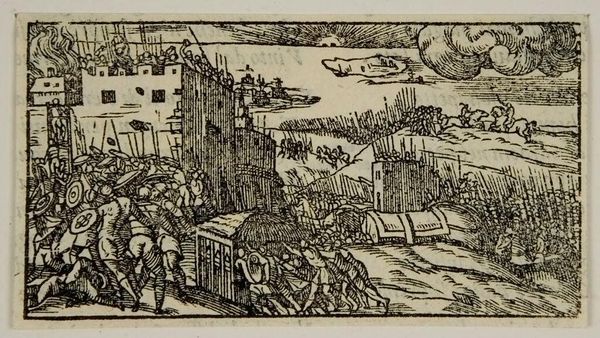
print, etching, engraving
#
narrative-art
#
baroque
# print
#
etching
#
landscape
#
cityscape
#
engraving
Dimensions: height 31 mm, width 53 mm
Copyright: Rijks Museum: Open Domain
Curator: This print, titled "April," dates back to the 17th century. It combines etching and engraving techniques, resulting in a compelling landscape with cityscape elements. Editor: Immediately striking is its miniature scale combined with expansive scene. It creates a certain sense of intimacy, despite the relatively bleak atmosphere. Curator: Absolutely, the layering of engraving and etching—especially noticeable in the clouds—implies labor and skill. Look at the detail included with the depiction of work being undertaken to maintain a life through transportation across water as well as the landscape itself with city and farming beyond. I think it's hard to disconnect those depicted labouring away and those commissioning or even viewing this work and the complex social stratifications in place. Editor: Yes, I can definitely see that interplay reflected here; in terms of representation and consumption this speaks volumes. I'm especially interested in the figures—foregrounded almost like spectators—who gaze at this city scene before us and beg questions of access, ownership, and visibility which have very palpable resonance even now. Who are these spectators depicted and how is this shaped by what's happening elsewhere on that landscape. Curator: Precisely! And thinking about the choice of “April” as a title too, a time of agricultural promise that may have not yet benefited the individuals and worker within the frame. The use of etching and engraving allowed for reproducibility and wider distribution for that time—so we have a commentary on power as well as technical processes intertwined within this production. Editor: Agreed, a lot to unpack within this seemingly small landscape print. Curator: Indeed. This piece challenges us to look deeper, beyond the surface and the conventional associations of landscape with the 17th-century and consider its place as a manufactured material commodity intended to express and conceal various power dynamics. Editor: Exactly. The historical backdrop frames this artwork in ways that help make contemporary issues of inequality all the more pressing, which brings even further urgency when studying a work like this one.
Comments
No comments
Be the first to comment and join the conversation on the ultimate creative platform.
